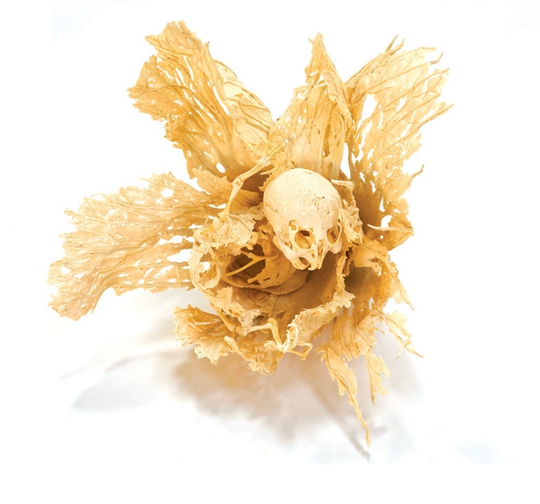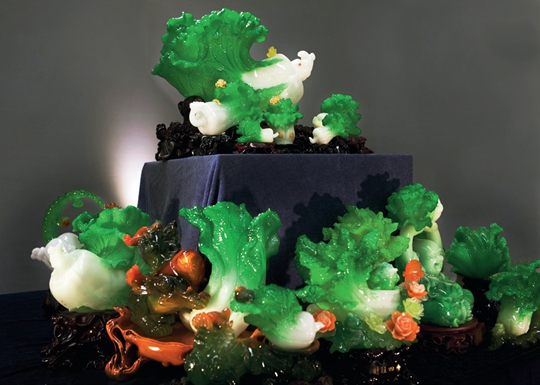CABBAGE
| June 26, 2015 | Post In 2015年6月号

At the National Palace Museum in Taipei, visitors cue up for an unlikely icon. The nineteenth-century Jadeite Cabbage, which sits just 18.7 centimetres tall, is admired for its natural gradient and delicate carvings. A robust and opaque white stock symbolizes purity, while verdant leaves and a clinging locust on its side represent fertility and abundance. Female virtues may never again be attached to a cabbage of such majesty, yet several artists over the years have related themes of ephemerality, seduction and transformation through its resilient character.

Replacing fragile cabbage leaves with bone replicas, artist Shen Shaomin creates hybrid forms in his “Experimental Field” series. Cabbages are merged with animal skulls and set against macabre black backdrops, forgoing history to appear more like objects in a seventeenth-century Wunderkammer. In Ju Duoqi’s series “Fantasies in Chinese Cabbage,” the artist creates portraits of beautiful women with a compositional technique akin to the sixteenth-century Mannerist Giuseppe Arcimboldo, who was perhaps the first to apply cabbage to the articulation of a man’s sternum. In Ju’s portraits, cabbage ladies are placed in various vegetable-rendered scenarios. Alluding more to the biological nature of the leafy green, and using this to explore the notion of nationalism, Zambian artist Stary Mwaba examines the effects of Chinese colonization on Zambian agricultural practices. Soaking cabbage leaves in yellow, red, and blue ink (the colors of the Zambian flag) he notes that, while the leaves change color, their stems and veins remain the same.

